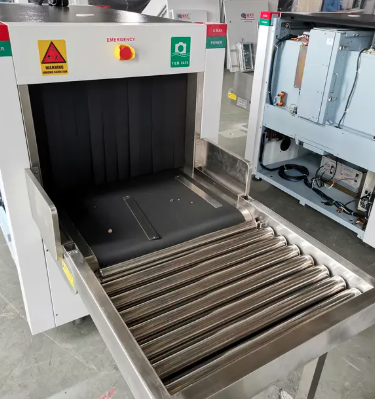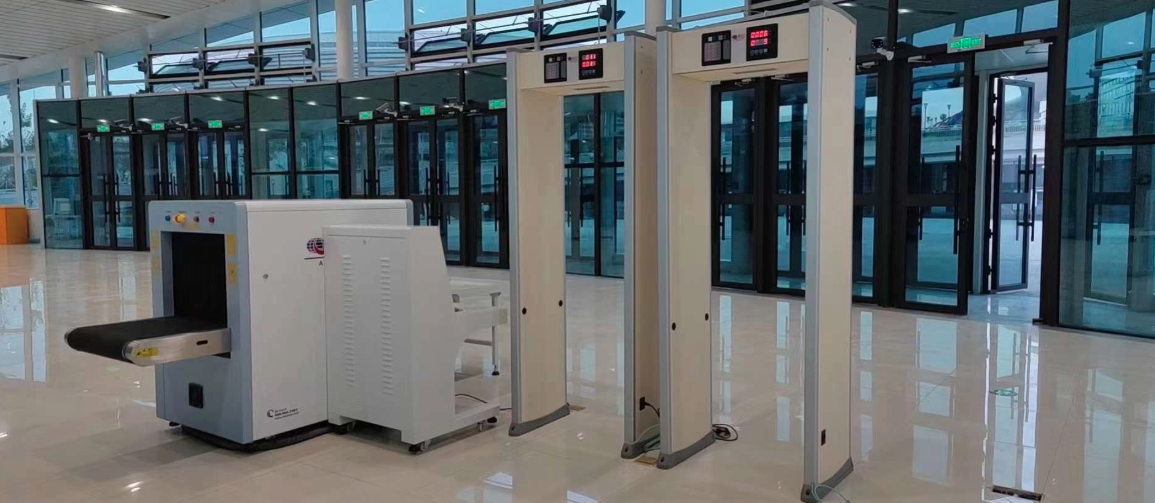Views: 4 Author: Site Editor Publish Time: 2025-09-24 Origin: Site








In today’s world, public venues face a constant challenge: how to keep visitors safe while maintaining smooth operations. Crowded airports, stadiums, train stations, corporate offices, and schools are all potential targets for security threats. X-ray baggage scanners have become an essential tool in managing these risks. By allowing security personnel to inspect bags, parcels, and personal items without opening them, these devices provide a fast, efficient, and reliable way to detect weapons, explosives, prohibited liquids, and other dangerous materials.
From detecting concealed threats in airports to screening backpacks in schools, X-ray scanners help protect people, streamline security checks, and prevent incidents before they happen. Their combination of advanced imaging technology, AI-assisted detection, and portable models makes them adaptable to virtually any public venue, ensuring safety without compromising convenience.
Public venues can be crowded and chaotic. They also attract unwanted items. Scanners help reduce risk and make security checks faster.
Benefits They Offer:
Detect weapons, explosives, drugs, and other threats
Reduce human errors and missed items
Improve throughput in high-traffic areas
Keep staff and visitors safer
They are designed to minimize radiation exposure and protect privacy. People see only outlines, not detailed personal items. AI highlights items that need extra attention.
Airports and train stations are high-risk zones where security needs to be both quick and thorough. Scanners play a crucial role in handling thousands of bags daily, ensuring that security protocols are met without causing significant delays.
Scanners are essential for screening both carry-on and checked luggage. They can detect hidden weapons, liquids, and electronics, which is vital for maintaining safety. Additionally, they support automated threat alerts, helping security personnel prioritize checks and respond more efficiently to potential threats.
| Venue Type | Purpose | Scanner Role |
|---|---|---|
| Airports | Prevent dangerous items onboard | Fast, multi-view scanning |
| Train Stations | Ensure passenger safety | Detect prohibited objects |
| Bus Terminals | Monitor luggage efficiently | Portable scanners for quick use |
Scanners also help streamline passenger flow. With their efficient scanning capabilities, lines move faster, and fewer bags require manual inspection. This not only enhances security but also improves the overall travel experience for passengers.

Event venues and stadiums, such as those hosting concerts, sports games, and festivals, are bustling spaces that require robust security measures. Scanners are indispensable in keeping crowds safe while maintaining efficient entry processes.
Scanners are used to detect weapons, explosives, or other dangerous items, ensuring that the event remains safe for all attendees. They can quickly check backpacks, purses, and packages, which is crucial in high-traffic areas. Maintaining fast entry is essential to prevent crowd bottlenecks and ensure a smooth experience for everyone.
Portable or compact scanners can be moved to different locations as needed, providing flexibility in security operations. Multiple scanners at entry points can significantly reduce wait times, allowing large crowds to enter efficiently.
Tip: Combining X-ray images with CCTV surveillance can improve overall security. This integrated approach allows for better monitoring and quicker response to any potential threats. By using multiple scanners at entry points, event organizers can ensure that security is both thorough and efficient, enhancing the safety and enjoyment of the event for all attendees.
Government and corporate buildings, such as courthouses, city halls, and corporate headquarters, often handle sensitive information and high-profile individuals. Security in these areas is paramount, and scanners play a crucial role in maintaining a safe and secure environment without disrupting daily operations.
Scanners are widely used to screen visitors and packages, ensuring that only authorized items enter the premises. They are particularly useful for screening staff bags and deliveries, providing an additional layer of security. These devices can detect unauthorized devices or liquids, preventing potential threats from entering sensitive areas.
Automated alerts for suspicious items are another key feature of these scanners. When a scanner detects something unusual, it can immediately alert security personnel, allowing for a swift and appropriate response. This not only enhances security but also ensures that operations continue smoothly.
Moreover, the presence of scanners serves as a deterrent. Knowing that items are being checked, people are less likely to attempt to bring in unauthorized or dangerous items. This proactive approach helps to reduce the risk of security breaches before they can occur, creating a safer environment for everyone.
Schools and universities are environments where safety is paramount, yet the learning experience must remain uninterrupted. Balancing security measures with the need for a conducive educational atmosphere is crucial. X-ray scanners play a vital role in achieving this equilibrium.
Educational institutions face unique challenges when it comes to security. Ensuring the safety of students, staff, and visitors is essential, but traditional security methods can sometimes disrupt the learning environment. X-ray scanners offer a discreet and efficient solution to address these concerns.
Check Backpacks and Parcels Discreetly: Scanners can be strategically placed in hallways, entrances, or libraries to check backpacks and parcels without causing significant delays. This helps prevent weapons or contraband from entering the premises while minimizing disruption to daily routines.
Prevent Weapons or Contraband from Entering: By detecting prohibited items, scanners provide an additional layer of security. This not only protects the school community but also helps maintain a safe and focused learning environment.
Support Emergency Planning and Safety Drills: Scanners can be integrated into emergency planning and safety drills. They can be used to simulate scenarios and ensure that staff and students are familiar with security protocols, enhancing overall preparedness.
Many educational institutions prefer smaller, mobile scanners for their flexibility. These compact devices can be easily set up in various locations such as hallways, libraries, or event spaces as needed. This allows for a more adaptable security approach that can be tailored to the specific needs of different areas within the campus.
In summary, X-ray scanners are an effective tool for educational institutions. They help maintain security without disrupting the learning environment, ensuring that students, staff, and visitors can focus on their educational and professional goals in a safe setting.

Scanners rely on differences in material density. Metals show up lighter; plastics, liquids, or organic items appear darker. Advanced systems add AI detection to highlight anomalies.
Detection Features:
Automatic alert for weapons or explosives
Color coding for material type
Multi-angle views for concealed objects
Material Detection Table:
| Material Type | Appearance on Scanner | Common Items |
|---|---|---|
| Metal | Light | Guns, knives, electronics |
| Plastic | Medium | Toys, containers |
| Organic | Dark | Food, liquids |
| Liquids | Varies | Bottles, gels |
They can spot both prohibited and everyday items, helping operators quickly decide what to check manually.
X-ray baggage scanners in public venues are security devices that scan bags, backpacks, and parcels to detect weapons, explosives, liquids, and other prohibited items without opening them.
These scanners are widely used in airports, train stations, stadiums, concert venues, government buildings, corporate offices, and educational institutions to enhance security and prevent dangerous items from entering public spaces.
X-ray baggage scanners detect threats by analyzing differences in material density, where metals appear lighter, plastics and liquids appear medium, and organic items appear darker, while AI-assisted scanners can automatically highlight suspicious items.
Yes, modern X-ray baggage scanners in public venues can detect non-metallic items such as plastics, liquids, and organic substances, although some items hidden in dense materials may require careful manual inspection.
X-ray baggage scanners emit very low levels of radiation that comply with international safety standards, making them safe for both visitors and security personnel in public venues.
No, X-ray baggage scanners in public venues focus on detecting potential threats rather than personal details, showing general outlines instead of sensitive information, which protects visitor privacy.
X-ray baggage scanners play a critical role in securing public venues, from bustling transit hubs and concert stadiums to government buildings and educational institutions. They not only help detect threats quickly but also improve operational efficiency and maintain visitor confidence.
For organizations looking to enhance security with reliable, state-of-the-art scanning solutions, Safeway Inspection System Company Limited offers a comprehensive range of X-ray baggage scanners. With advanced imaging, AI-assisted detection, and flexible deployment options, Safeway provides solutions tailored to the unique needs of airports, event venues, corporate offices, and educational institutions. Partnering with a trusted provider like Safeway ensures that your venue stays safe, compliant, and prepared for any potential security challenge.
0086 13670213490